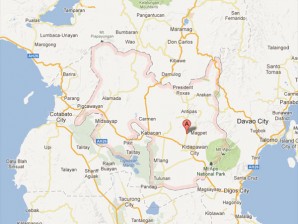146 aftershocks of North Cotabato quake recorded

Phivolcs supervising science research specialist Angelito Lanuza told the Philippine Daily Inquirer that aftershocks from the North Cotabato earthquake could last for several months.
Lanuza said that as of 2 p.m., on Monday, 146 aftershocks have been recorded by the agency, only 10 of which were felt.
The volcanologist said the strongest aftershock measured at magnitude 5.7 happened at 4:08 a.m. on Monday, with its epicenter at 17 kilometers northwest of Carmen town in North Cotabato and a depth of three kilometers.
The aftershock was felt at intensity 6 at the epicenter (shaking is so strong people would have difficulty walking); intensity 5 (almost everybody felt the shaking) in Kabacan town; intensity 4 (most of the people inside houses and buildings felt the shaking) in Matalam town; intensity 3 (many people inside houses and buildings felt the shaking) in Kidapawan, Cagayan de Oro, Cotabato and Davao Cities, as well as the towns of President Roxas, Arakan, Magpet, and Makilala all in North Cotabato; intensity 2 (people at rest felt the movement) in Koronadal town of South Cotabato, in Quezon, Maramag, Valencia, and Don Carlos towns in Bukidnon, and in Misamis Oriental; and at intensity I (hardly anybody felt the shaking) in General Santos and Butuan Cities.
According to Lanuza, intensity 6 on the earthquake intensity scale is categorized as very strong where very old or poorly built houses and man-made structures are slightly damaged although well-built structures are unaffected. Intensity is measured by the visible effects of an earthquake while magnitude is based on the energy or force released by the temblor.
Article continues after this advertisementA tremor’s intensity, he added, would be primarily affected by the focus depth of the earthquake as well as its epicenter location whether in land or beneath the sea.
Article continues after this advertisementLanuza further said most of the damage caused by the earthquake would be found in the town of Carmen, the location of the epicenter.
He told the Inquirer that the strong magnitude meant the aftershocks could last for months based on observations from the aftermath of the July 16, 1990 magnitude 7.9 Luzon earthquake.
“The aftershocks from that earthquake lasted for a year. We recorded at least 20,000 aftershocks because it was really very powerful,” he said.
Lanuza nevertheless said that most of the aftershocks were hardly felt and should be no cause for panic.